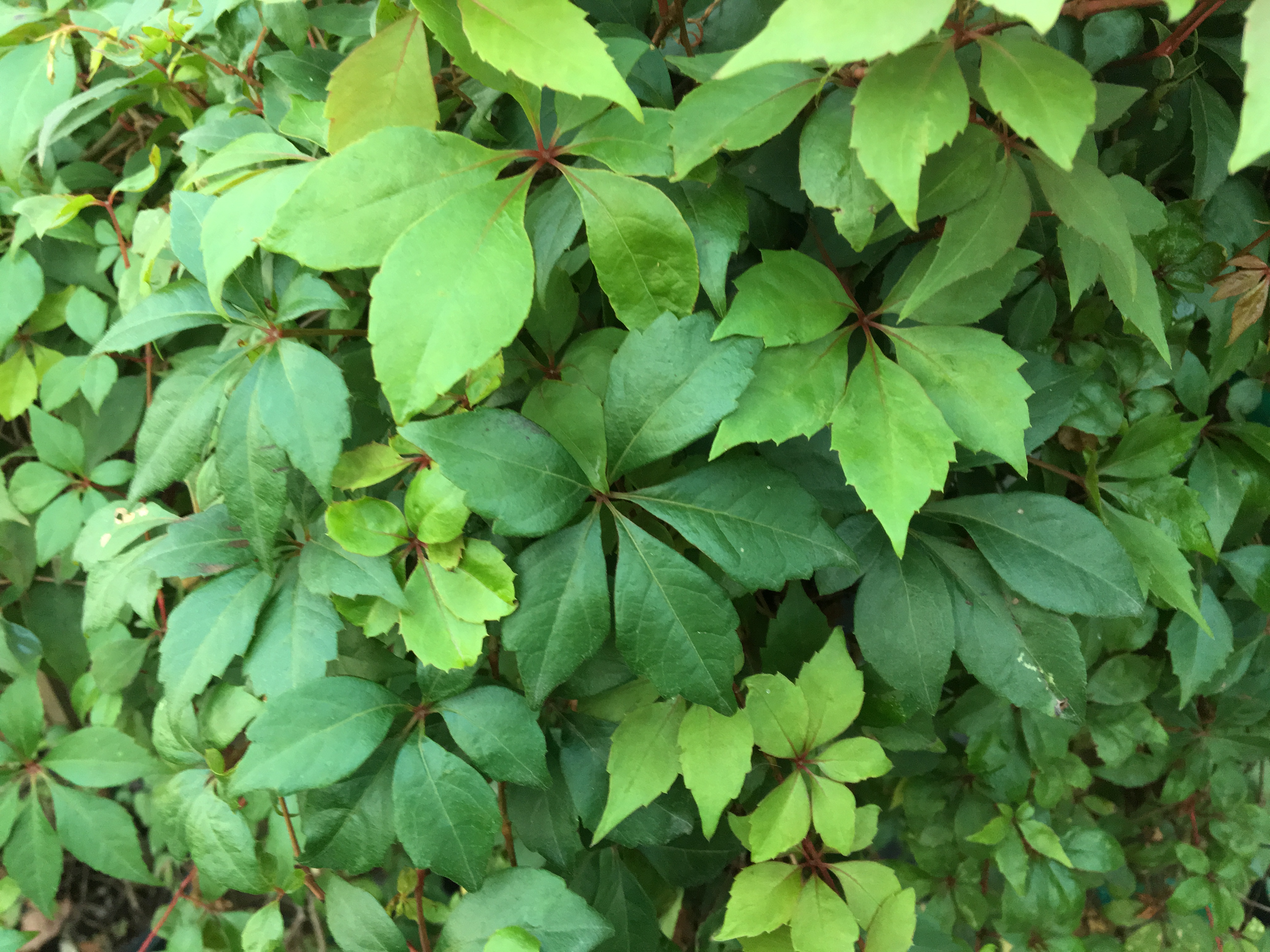
Whole Plant Traits: Plant Type: Ground Cover Native Plant Poisonous Vine Woody Plant Leaf Characteristics: Broadleaf Evergreen Deciduous Habit/Form: Climbing Creeping Growth Rate: Rapid Maintenance: Medium Texture: Coarse.Climbing Method: Tendrils Edibility: toxic berries Dimensions: Height: 30 ft. Moderately resistant to deer damage, heat, drought, and soil compaction. Play Value: Attracts Pollinators Wildlife Food Source Particularly Resistant To (Insects/Diseases/Other Problems): Virginia creeper is pollution and salt tolerant. Bees and other pollinators enjoy the nectar from the flowers. Attributes: Genus: Parthenocissus Species: quinquefolia Family: Vitaceae Life Cycle: Perennial Woody Recommended Propagation Strategy: Seed Stem Cutting Country Or Region Of Origin: Eastern Canada and United States to Mexico, North Carolina Distribution: throughout eastern and central North America south to Mexico Fire Risk Rating: extreme flammability Wildlife Value: Its fruits are eaten by songbirds, squirrels, opossum, raccoons, and other mammals.Tags: #showy flowers #deciduous #poisonous #full sun tolerant #heat tolerant #drought tolerant #wildlife plant #salt tolerant #woody #spring flowers #apvg #fall interest #showy fruits #moist soil #food source wildlife #cpp #fire extreme flammability #NC native #well-drained soil #vines #summer flowers #deer resistant #woody vine #native garden #groundcover #summer interest #deciduous vine #self-seeding #spring interest #native vine #pollinator plant #compaction tolerant #flowers mid-summer #food source summer #vertical spaces #food source nectar #food source pollen #flowering vine #wet soils tolerant #bird friendly #dry soils tolerant #mammals #food source soft mast fruit #fall color red #vine #Piedmont Mountains FACU #Coastal FACU #partial shade tolerant #apvg-vg #bee friendly #Audubon #woodland garden #coastal plant 'Engelmann Ivy', 'Monham', 'Muroru', 'Tricuspidata', Troki Profile Video: See this plant in the following landscapes: Back of House Planting Native/ Woodland Garden Cultivars / Varieties:Ĭommonly sold as STAR SHOWERS, "paint splatter" white markings on green leaves.Ĭommonly called RED WALL, producing bronze foliage in spring, green through summer, red in fall. VIDEO Created by Elisabeth Meyer for " Annuals, Perennials, Vines, and Groundcovers" a plant identification course offered in partnership with Longwood Gardens. It is also susceptible to a number of insect pests including beetles, scale and leafhoppers. Mildews, leaf spots, canker, and wilt are occasional problems for this plant. Insects, Diseases, or Other Plant Problems: Select plants with a low flammability rating for the sites nearest your home. This plant has an extreme flammability rating and should not be planted within the defensible space of your home. If unchecked, vines can also attach to and seriously damage such objects as gutters, shutters or wiring around homes and buildings. It should not be grown up wood or shingle walls because the holdfasts are difficult to remove.

It should be sited in areas where it will have room to expand and grow. It often needs little care but must be trimmed regularly to keep it in bounds it grows quickly, but takes a year or two to get established. This is an easy-to-grow plant with good tolerance for a wide range of soils and urban conditions. Best fall color generally occurs in sunny locations.
VIRGINIA CREEPR FULL
The Virginia creeper is easily grown in average, medium moisture, well-drained soils in full sun to part shade. When rapidly growing, the aerial roots are bright orange-brown. Its bark is gray-brown with aerial roots and tendrils. It also will creep along the ground as suggested by the common name. It needs no support because it clings to surfaces (e.g., brick, stone or wood walls) by adhesive holdfasts (also called sucker disks) located at the tendril ends.

This is a vigorous tendril-climbing vine that will rapidly grow to 30-50’ long or more. Native to North Carolina, it can be found naturally in swampy forests, maritime forests, and thickets.
:max_bytes(150000):strip_icc()/thespruce.com-taxonomy-of-virginia-creeper-2132897-2-2ed185b3f15e4117a5619d6443657b62.jpg)
It is typically located in open areas of ravines, valleys, rich woods, thickets, rocky bluffs, hillsides, and fencerows. It is native to eastern and central North America south to Mexico. Parthenocissus quinquefolia is a deciduous, woody vine that is commonly called Virginia creeper or Woodbine.

Phonetic Spelling par-then-oh-SIS-us kwin-ke-FOH-lee-ah This plant has high severity poison characteristics.


 0 kommentar(er)
0 kommentar(er)
